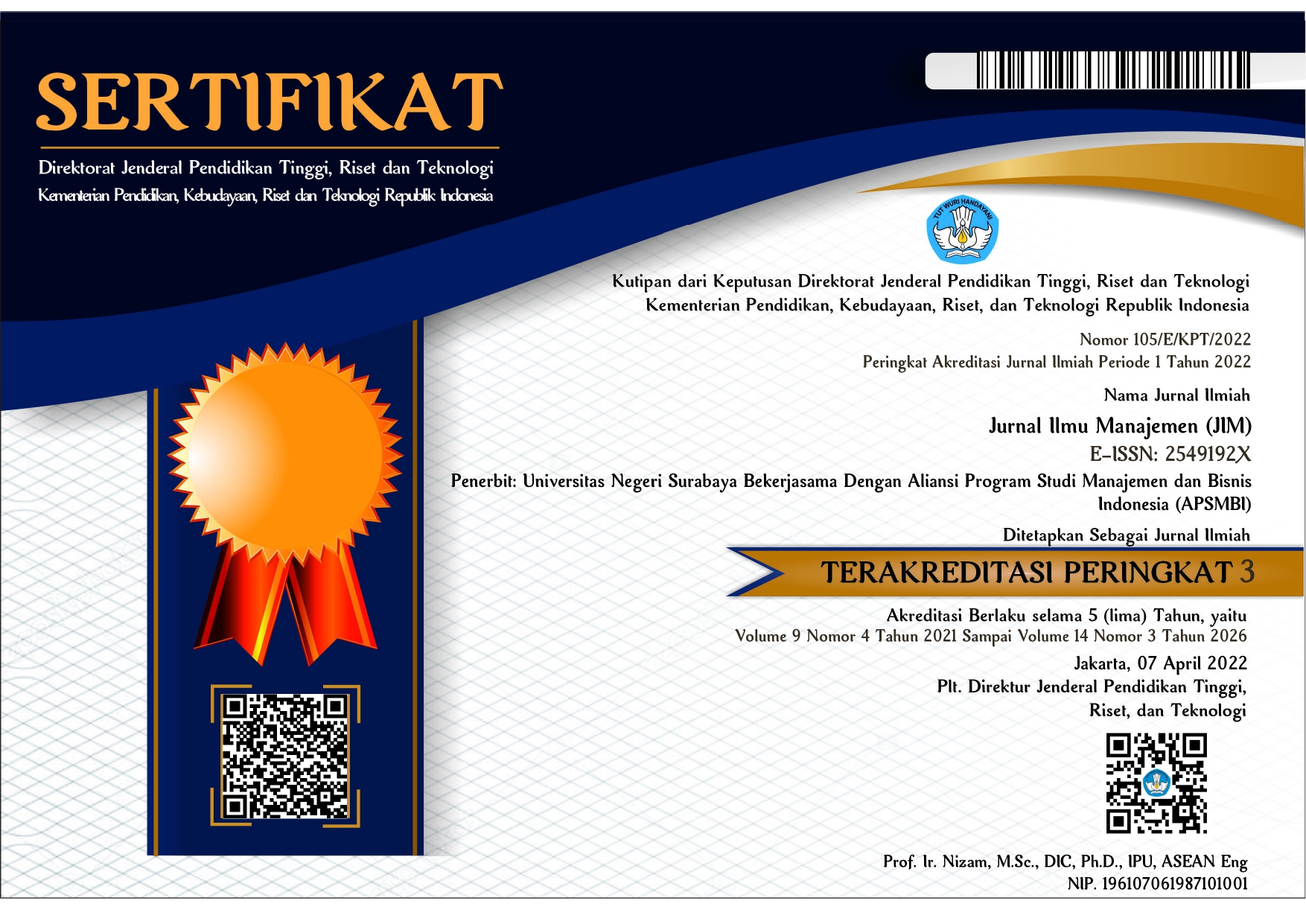Pengaruh Corporate Governance, Operating Capacity, Leverage, Likuiditas, dan Ukuran Perusahaan terhadap Financial Distress Perusahaan Sektor Aneka Industri
DOI:
https://doi.org/10.26740/jim.v10n2.p459-474Keywords:
corporate governance, financial distress, financial ratio, firm size, operating capacityAbstract
Financial distress is a situation that occurs when a company have unhealthy financial conditions. If this condition occurs sustainably, it will impact the company's bankruptcy. This research aims to determine the effect of corporate governance, operating capacity, leverage, liquidity, and firm size. The independent variables in corporate governance include institutional ownership, managerial ownership, and an independent board of commissioners. This research's population are companies in the miscellaneous industry sectors listed on the Indonesia Stock Exchange from 2017 to 2020. The sample retrieval technique uses purposive sampling and obtained 15 companies as samples in this research. The data were analysed using logistic regression and calculated with IBM SPSS 25. The result showed that an independent board of commissioners significantly and negatively impacted financial distress. Leverage (debt to assets ratio) and firm size significantly and positively affected financial distress. While institutional ownership, managerial ownership, operating capacity (total assets turnover), and liquidity (current ratio) don't significantly impact financial distress. Therefore, companies in the miscellaneous industry sectors can give more attention to the role of institutional and managerial ownership to avoid financial distress.
References
Agoes, S., & Ardana, I. C. (2009). Etika Bisnis dan Profesi: Tantangan Membangun Manusia Seutuhnya. Jakarta: Salemba Empat.
Brigham, F., & Houston, J. F. (2018). Dasar-Dasar Manajemen Keuangan. Jakarta: Salemba Empat.
Ghozali, I. (2018). Aplikasi Analisis Multivariete dengan Program IBM SPSS 21 (8th ed.). Semarang: Badan Penerbit Universitas Diponegoro.
Idx.co.id. (2022). Laporan Keuangan dan Tahunan. (https://www.idx.co.id/perusahaan-tercatat/laporan-keuangan-dan-tahunan/, diakses pada 3 Januari 2022)
Kasmir. (2019). Analisis Laporan Keuangan. Depok: Rajawali Pers.
Nadya, Damia, & Riza. (2021). Perkembangan Indeks Daya Saing Global Indonesia. (https://berkas.dpr.go.id/puskajianggaran/referensi-apbn/public-file/referensi-apbn-public-24.pdf, diakses pada 23 Oktober 2021)
Purwohandoko, Asandimitra, N., Isbanah, Y., & Kautsar, A. (2014). Dasar-Dasar Manajemen Keuangan. Teori, Aplikasi, dan Kasus. Surabaya: Unesa University Press.
Tandelilin, E. (2010). Portofolio Dan Investasi (1st ed.). Yogyakarta: Kanisius.
Weforum.org. (2021). World Economic Forum. (https://www.weforum.org/reports/, diakses pada 22 Oktober 2021)
Downloads
Published
How to Cite
Issue
Section
License

This work is licensed under a Creative Commons Attribution-NonCommercial 4.0 International License.
 Abstract views: 1224
,
Abstract views: 1224
, PDF Downloads: 813
PDF Downloads: 813










